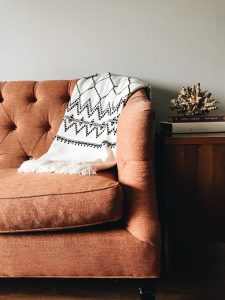Nowadays many people possess comfortable yards in their houses or apartments and they can turn these places into by using lovely patio furniture. Yet these items can soon become deteriorated by exposure to the weather, especially if water damage occurs. This is where outdoor furniture coverings come into play, giving your tables and chairs a crucial layer of protection. This post will explain the benefits of these covers, including how they prevent water damage to your outdoor furniture and why they’re a must purchase for any patio or garden arrangement. Whether you need a complete roof replacement or just repairs, professional commercial roofing contractors have the expertise to assess your needs and provide the most appropriate solutions for your building.
Why Preserving Outdoor Furniture Is So Important
Understanding why furniture protection is required in the first place is essential before delving into the mechanics of how covers keep your furniture safe. Everyday weather conditions such as rain, snow, and dew in the mornings are all present for outdoor furniture. This exposure may eventually cause a variety of problems, such as structural difficulties or cosmetic harm.Given that it can lead to fabric mold, metal rust, and warping of wood, water damage is especially sneaky.
How to Protect Your Furniture Using Waterproof Covers
The main characteristics of outdoor furniture covers waterproof are combined to keep your tables and chairs safe and dry. Though it may surprise you, the method by which these covers accomplish this is more intricate than just providing a covering between your furniture and the outside environment.
The materials that go into making premium coverings are first and foremost chosen for their ability to repel water. To prevent water from penetrating, many coverings are composed of synthetic materials like vinyl or polyester. To strengthen their protective qualities, these materials are frequently treated with extra waterproofing chemicals.
Water resistance is also dependent on how the coverings are made. Many have several fabric layers, each with a distinct function. Since it’s meant to be exposed to direct rain and snow, the outer layer is usually the hardest. Maybe a waterproof membrane that acts as an additional moisture barrier is located underneath this. For added protection against surface scratches on your furniture, some covers also have a soft inside lining.
As possible weak points in any cover, seams, and closures receive extra attention from makers. Water seepage through the stitching is sometimes avoided by high-quality covers by using sealed or taped seams. Water seepage is reduced when furniture is closed tightly, which is accomplished via closures like drawstrings or zippers.
Outside the Water: Furnishing Covers Provide Extra Security
Although protecting against water damage is the main issue, outdoor furniture coverings also provide defense against various other possible risks. Material fading and degradation can occur over time due to UV radiation from the sun. A lot of covers have UV inhibitors applied to them to help protect your furniture from these damaging emissions.
Aside from causing stains and necessitating regular cleaning, dust, filth, and debris can also collect on exposed furniture. Tables and chairs are kept clean and usable by covers, which serve as a barrier against these particles. For people who live close to construction sites or in areas with high pollen concentrations, this is very helpful.
Covers may also offer protection from harm caused by animals. For furniture that is left exposed, animals such as squirrels and birds may leave droppings or scratches. You lower the possibility of such damage happening by keeping your pieces covered when not in use.
How to Cover Your Outdoor Furniture
Several things need to be taken into account while choosing covers for your outdoor tables and chairs. Proper sizing and fitting are crucial; excessively voluminous coverings may cause water to collect and leak beneath, while excessively narrow ones may exert pressure and rip with time. A good fit is guaranteed by the many manufacturers who offer covers made especially for varying furniture sizes and forms.
A further important factor to consider is material quality. The long-term benefits of investing in sturdy, high-quality covers outweigh the temptation to choose less expensive alternatives. Keep an eye out for coverings constructed from robust, weather-resistant materials that are intended to endure the unique circumstances in your location.
Aesthetic and practical considerations aside, color is another important factor. While darker hues could be more likely to show stains and filth, lighter hues tend to reflect sunlight better and may thus provide superior UV protection. While some covers offer dramatic colors to go with your outdoor decor, some come in neutral tones that are meant to blend in.
Outdoor Furniture Covers: How to Use and Maintain Them
Furniture like Chair & Table Covers are best utilized and should be used in the right way as described above to enjoy the benefits as expected.
If you are covering furniture, make sure it is clean and dry because moisture trapped beneath can cause mold and mildew to grow. Before putting covers on cushions, whenever feasible, let them air out and dry fully.
The coverings themselves should be cleaned regularly as well. If you follow the manufacturer’s cleaning recommendations first, most can be simply cleaned with water and a little detergent. Maintaining your covers’ aesthetic appeal and their protective qualities both benefit from proper washing.
To keep your covers from blowing away in windy weather, ensure they are tied firmly. For this reason, many coverings have straps or tie-downs. Brush accumulation off the covers during prolonged periods of heavy snowfall to avoid undue pressure on the fabric from too much weight.
Conclusion:
In conclusion, today outdoor furniture is very fashionable and it will be useful to have covers for them to save from water and other destructive factors. It is the protective layer that provides both an outer beauty and strength feature to the outdoor furniture since it protects it from water, sun and grime. When properly chosen and used, they significantly extend the service life of the furniture and ensure that the recreation area remains warm and comfortable for as long as possible.








